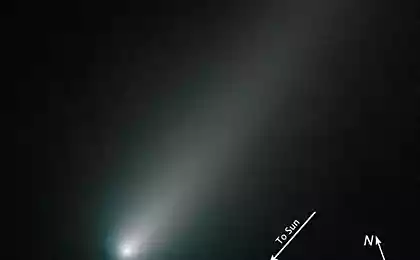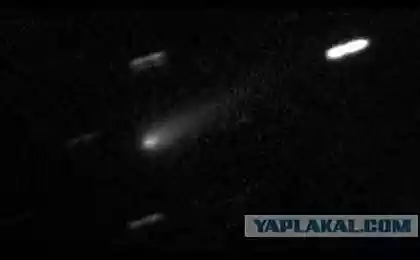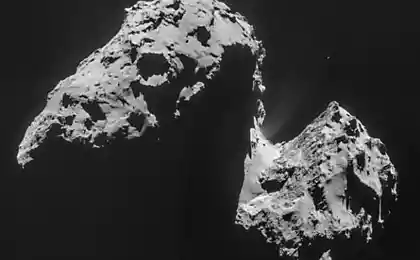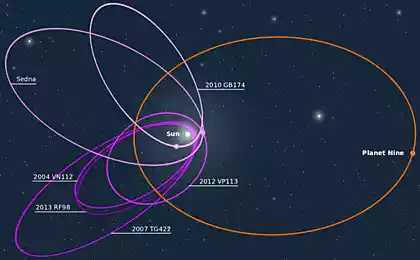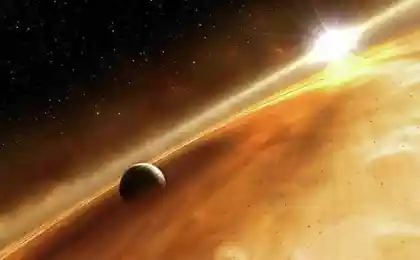501
Scientists have discovered a strange planet disguised as a comet
The recently discovered exoplanet the size of Neptune is very similar to the comet: it emits a powerful stream of gas, as the comet's tail. This strange discovery — the first of its kind.
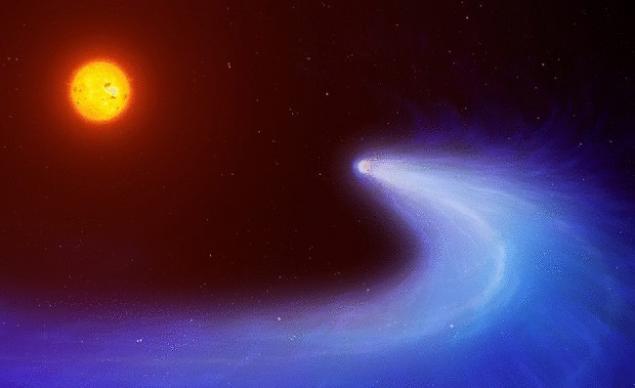
Unusual cometophobia planet, known as GJ 436b, orbits a red dwarf and has a mass 22 times the mass of Earth. Astronomers were able to detect a giant cloud of gas around a planet, conducting observations using the space telescope Hubble and the Chandra X-Ray.
"I was amazed at the gigantic size of the gas cloud, leaving the planet," said David Ehrenreich, an astronomer at the University of Geneva.GJ 436b, located in the constellation of Leo in 33 light years from Earth, is the so-called hot Neptune. Such planets are similar in mass to Uranus and Neptune (10-20 times the mass of the Earth), but are very close to their star. So, the orbital radius of GJ 436b is only 4.8 million kilometres, which is 33 times less than the Earth's orbit is 13 times smaller than mercury's orbit.
A cloud of gas around GJ 436b, consisting mainly of hydrogen, has two parts: a planet surrounding the ball and tail. Diameter of bowl is about 3 million kilometers, five times greater than the diameter of the star around which the exoplanet revolves, and only two times smaller than the diameter of the Sun. The length of the tail is more difficult to assess, but scientists estimate it at 15 million kilometers.
Although some studies in the past predicted the existence of these planets, GJ 436b became the first open the planet, has a tail like a comet. Scientists have calculated that every second, the planet emits up to 1,000 tons of gas. This means that GJ 436b is losing about 0.1% of its atmosphere every billion years, but in the first few billion years of its existence, the planet could lose more than 10% of its atmosphere.
Ehrenreich told reporters that the space telescope "Kepler" and future missions of NASA and ESA — TESS and PLATO will open thousands of systems, such GJ436, in the coming years. In this regard, may soon be discovered many such planets with the gas tail.
Now scientists plan to study less massive planets such as "super-earths" and "mini-Neptune", in the presence of their powerful atmosphere and a gas tail. published
P. S. And remember, only by changing their consumption — together we change the world! ©
Source: hi-news.ru/science/uchyonye-obnaruzhili-strannuyu-planetu-maskiruyushhuyusya-pod-kometu.html

Unusual cometophobia planet, known as GJ 436b, orbits a red dwarf and has a mass 22 times the mass of Earth. Astronomers were able to detect a giant cloud of gas around a planet, conducting observations using the space telescope Hubble and the Chandra X-Ray.
"I was amazed at the gigantic size of the gas cloud, leaving the planet," said David Ehrenreich, an astronomer at the University of Geneva.GJ 436b, located in the constellation of Leo in 33 light years from Earth, is the so-called hot Neptune. Such planets are similar in mass to Uranus and Neptune (10-20 times the mass of the Earth), but are very close to their star. So, the orbital radius of GJ 436b is only 4.8 million kilometres, which is 33 times less than the Earth's orbit is 13 times smaller than mercury's orbit.
A cloud of gas around GJ 436b, consisting mainly of hydrogen, has two parts: a planet surrounding the ball and tail. Diameter of bowl is about 3 million kilometers, five times greater than the diameter of the star around which the exoplanet revolves, and only two times smaller than the diameter of the Sun. The length of the tail is more difficult to assess, but scientists estimate it at 15 million kilometers.
Although some studies in the past predicted the existence of these planets, GJ 436b became the first open the planet, has a tail like a comet. Scientists have calculated that every second, the planet emits up to 1,000 tons of gas. This means that GJ 436b is losing about 0.1% of its atmosphere every billion years, but in the first few billion years of its existence, the planet could lose more than 10% of its atmosphere.
Ehrenreich told reporters that the space telescope "Kepler" and future missions of NASA and ESA — TESS and PLATO will open thousands of systems, such GJ436, in the coming years. In this regard, may soon be discovered many such planets with the gas tail.
Now scientists plan to study less massive planets such as "super-earths" and "mini-Neptune", in the presence of their powerful atmosphere and a gas tail. published
P. S. And remember, only by changing their consumption — together we change the world! ©
Source: hi-news.ru/science/uchyonye-obnaruzhili-strannuyu-planetu-maskiruyushhuyusya-pod-kometu.html
